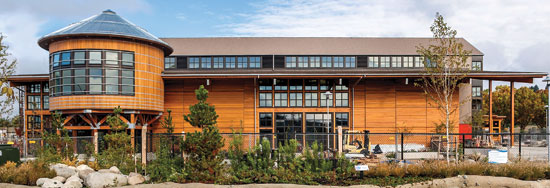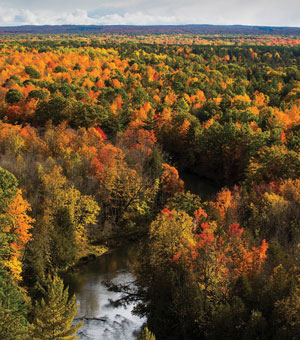Sustainable Building with SFI Certified Wood
Learning Objectives:
- Describe the benefits of SFI certification and the references or endorsements of the SFI program in major green-building standards and forestry programs.
- List the main elements of the SFI certification, and explain how they differ from other forestry product standards.
- Explain how the SFI standard impacts conservation and economic development efforts by groups including family forest landowners, indigenous peoples, and state and local governments.
- Discuss the impact of the SFI standard on green building projects and research into forestry and related topics.
Credits:
All architects know that when designing a project, materials used in the construction are critical to address sustainability objectives. The American Institute of Architects (AIA) 2030 commitment, which is aimed “to apply the principles of sustainable design to every project from its inception and early design through project completion and ongoing building operations—not just those projects where our clients wish to pursue third-party green building certification,” demonstrates this importance.
This article addresses why architects and their clients should ask for certified wood products, which drives the growth of healthy forests and healthy communities. The article also examines the growing interest in green building legislation and government action to recognize the value of all forest certification programs. These government actions are aimed to provide incentives to local products used in green building projects while providing a market incentive for landowners to adopt or maintain sustainable forest practices.
Why Materials Matter
According to 2011 statistics from the U.S. Department of Energy, buildings account for 41 percent of total U.S. energy consumption and 38 percent of U.S. carbon dioxide (CO2) emissions—figures that have spurred the architecture and construction industries to find ways to reduce the environmental footprint of new structures. That is why sourcing materials that have a low impact on carbon emissions is critical to any building construction.
Wood has been used as a building material for thousands of years due to its desirable aesthetic, superior environmental characteristics, and ease of construction. “Wood was chosen initially because of economic considerations, and it's turned out to be a good decision,” says Drew Phillips, a construction executive with Berschauer Phillips Construction, describing a recent project. “It's much less energy-intensive to manufacture wood products than steel.”
Wood's inherent environmental benefits are clear, but because wood comes from forests, it's important that those forests are managed in a responsible way. Forest certification programs are one way to help promote responsible management of forestland. Voluntary third-party forest certification began in the 1990s partly in response to market concerns about forest management and illegal logging. Today, forest certification programs promote sustainable forest management, considering environmental, social, and economic factors.
 |
Hands-On Children’s Museum of Olympia, Washington, demonstrates exceptional commitment to sustainability and achieved Green Globes certification. Photo courtesy of The Miller Hull Partnership, LLP |
According to a 2012 continuing education article in GreenSource sponsored by SFI, forest certification programs display leadership within the broad environmental community. “Forest certification can be a proof point that wood products are from well-managed forests where the perpetual growing of trees is integrated with protection of wildlife, plants, soil and water quality,” according to the article.
 |
The SFI 2010-2014 standard is the most widely used forest certification standard in North America, and was developed specifically for U.S. and Canadian forests. Photo courtesy of Tom Haxby — Manistee River in Michigan |
 |
Among the forest certification standards is the Sustainable Forestry Initiative (SFI) program, described in detail in this article. Other forest certification programs include the American Tree Farm System (ATFS), the Canadian Standards Association (CSA), the Forest Stewardship Council (FSC), and the Program for Endorsement of Forest Certification Systems (PEFC). SFI, ATFS, and CSA are all endorsed by PEFC, an umbrella organization that endorses national and regional certification standards. Globally, only 10 percent of the world's forests are certified to any forest certification standard.
Forest-certification experts note that while the programs may take different approaches, forest certification initiatives typically focus on:
- Protection of biodiversity
- Care for species at risk
- Preservation of wildlife habitats
- Safeguarding of water quality
- Sustainable harvest levels
- Prompt regeneration
- Third-party independent audits
Certification programs provide a market incentive that will keep managed forests as forests, which can provide economic return and at the same time support environmental values.
Architects, designers, and others within the building community have an opportunity to demonstrate their support for responsibly managed forests in North America by specifying forest certification standards in new construction or renovation projects.










